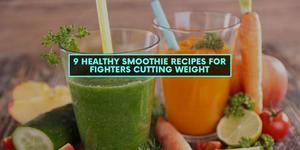The paleo diet is a diet almost commonly referred to as the caveman diet. The diet dates back to paleolithic times when our ancestors hunted and gathered meat, fish, fruits, vegetables, nuts, seeds, and eggs. It avoids dairy and grains that were not farmed until around 10,000 years ago.
The diet is all about eating healthy, natural, wholesome ingredients and avoiding ingredients such as wheat and dairy that can cause inflammation to many people., The diet is naturally low in carbs as it avoids wheat and potatoes and grains such as rice. Pasta and bread are also (usually) out on this diet, as well as processed food and sugar. The diet is extremely healthy by virtue of eliminating many of the foods that are bad for our health.
More...
The paleo diet a less rigid diet than some other low carb diets, like the keto diet, for example. That's because there is no macronutrient ratio to stick to as with keto, where you need to limit carbs to 5-10% and protein to below 20% to stay ticking over in ketosis and using fat for energy metabolism. This comes in handy for fighters, where the the demand for carbohydrates is higher than many other sports. Because the energy demands of fighters are different, the paleo diet for fighters look a little different than the regular paleo diet. Let's go talk about the basics of the paleo diet and then we can talk about adopting the paleo diet to the fighter's lifestyle.
Macronutrient Overview
As a simple rule of thumb for considering how to structure the ratio of macronutrients in your diet, you can think of the three macronutrients in these terms:

Protein - Protein is used as a building block for muscles. As you train and build muscles, the process involves you breaking muscles and then the muscles rebuilding themselves. The process leads to stronger, larger muscles, and all of this requires protein.
Fats - You need endurance in many types of exercise. You also need endurance when you train for long periods to build muscle and to practice technique and increase your ability to fight for longer periods. Fats provide an ideal source of energy for low-intensity long training periods.
Carbs - When it comes to fueling high-intensity exercise and providing short bursts of energy fast, the body needs carbohydrates.
Basic Guidelines of the Paleo Diet
There is really no "right" way to do paleo. The rules of paleo are pretty simple---you stick mainly to unprocessed meats, fruits, and vegetables. They are nutritionally dense foods that are also good for your health. And you cut out everything else. However, you can adhere to it as strictly or as loosely as you want. For instance, strict paleo people cut out diary. However, some do include diary (especially grass-fed butter) into their paelo diet without a detriment to their health. So, you have some leeway. Just don't include processed foods.
Here is a basic guideline of what to eat and not eat on a strict paleo diet.
Paleo EAT | Paleo DON'T EAT |
|---|---|
You will notice that grains stand out in the " don't eat" column. That is because grains are traditionally a "don't eat" item in traditional paleo diets. But there is no scientific consensus that cutting out grains completely is helpful to your overall health. Some research actually show that whole grains do reduce the risk of diabetes, heart disease, and stroke. Paleo traditionalists cut them out because it contains so many carbs and doesn't align with the mantra of only eating what was available during the paleolithic period.
However, because of fighters have a unique energy demand that needs to be met, grains can be incorporated into a fighter's paleo diet. To understand why grains can be incorporated into a fighter's paleo diet, we should first talk about the energy and metabolic requirements of fighters.
Metabolic Demands of Combat Athletes
When you're a combat fighter choosing a healthy diet is paramount to reaching your optimal performance. But when considering what you should eat and when you need first to understand your energy requirements more fully. The body converts nutrients in our body to energy through three different pathways but for this article we will be primarily talking about the two below:
- Aerobic metabolism (with oxygen)
- Anaerobic metabolism (without oxygen)
The aerobic system is needed for endurance activities and the anaerobic system is needed for explosive activities requiring maximal effort.
The regular paleo diet without modification is not ideal for athletes. The diet is high in protein and fat and lacks the carbohydrates that athletes need to perform at their best. Protein and fat can be metabolized for energy but only through the aerobic energy system, which is slow to react and requires oxygen.
Fighting is not just a fully anaerobic activity, like sprinting or Olympic lifts. Fighting is also not a fully aerobic activity, like long-distance running. Fighting has demands from both the aerobic and anaerobic systems. You need the anaerobic system to explode for a takedown or scramble, but you also need the aerobic system to continue to fight multiple rounds. So that is why fueling the fighter is more complex science than fueling other types of athletes. You have to fuel both systems adequately.
Anaerobic Metabolism
Anaerobic metabolism can be divided into the ATP-CP energy pathway (sometimes called the phosphate system) and glycolysis. ATP stands for Adenosinetriphosphate which is a compound that provides living cells with energy. This system provides around 10 seconds of energy and is used when exploding for a takedown, scrambling to get back up on your feet, or a multiple-punch combo. The short burst of energy doesn't use oxygen to make ATP.
The process uses up any ATP stored in the muscle after around three seconds. Following this the body then either switches to glycolysis or aerobic metabolism, if oxygen is available,
The second anaerobic pathway glycolysis also works without oxygen. It uses carbohydrates and produces lactic acid as a by-product. This energy system can be used for short high intensity bursts of activity. This process is also limited to a few minutes due to the build-up of lactic acid. Once the threshold of lactic acid is reached, you'll experience burnout, extreme fatigue, and muscle pain.
Aerobic Metabolism
Aerobic metabolism is the pathway used for the activity of a longer duration. It is what enables you to go multiple rounds without gassing out.
The process uses oxygen and converts carbohydrates, fats, and protein to ATP. This energy system is slower as it requires the circulatory system to transport oxygen to the working muscles before ATP is synthesized. Aerobic metabolism is used primarily during endurance exercise, which is generally less intense and can continue for long periods.
As you exercise, you move through these metabolic pathways. To begin with, when you exercise, ATP is created anaerobically. As you continue to exercise and you breathe more intensely, and your heart rate increases, more oxygen is available to metabolize ATP aerobically until you reach the lactate threshold.
Once you reach this level, you will once again move to anaerobic metabolism. However, this is not sustainable, and you need to decrease intensity to remove lactic acid. That is why you see so many people gas out after multiple failed takedown attempts in the UFC. Each time you attempt a takedown, you are exploding and using your anaerobic system. And if you aren't succeeding and keep repeatedly using your anaerobic system, you body eventually succumbs no matter how much you want to go on.
Fueling the Fighter
To produce ATP and fuel your exercise, your body uses nutrients. Fat is excellent for endurance, but it's not going to work for the explosiveness. If you are training for a fight, a lot of your training is going to train the explosive anaerobic system too. So the demands for carbohydrates are high.
You can use fat stores for hours or even days as long as oxygen is available, and you are exercising at a low level below 50% of your maximum heart rate. So fats is good for slower days. But if you increase the intensity of your training sessions, then carbohydrates in the form of glycogen will take over. Stored glycogen can last you about two hours before it is depleted. Once glycogen has gone, you'll experience a wall - (or a bonk) when you can do no more.
If you want to keep training for longer, then replenishing carbohydrates that are easily digested is essential. As mentioned, if you don't replenish carbohydrate stores, you'll have to downgrade to low intensity and use fat to fuel your activity.
It is because of the need for carbohydrates that combat athletes can incorporate grains into the paleo diet. Fruits and vegetables contain some carbohydrates. However, grains are rich in carbohydrates. Grains contain 2-3 times as much carbohydrates as many fruits and vegetables.
What Grains Can You Eat and How Much?
Just because grains are available doesn't mean you can eat as much of it as you want or whatever grains you want on a paleo diet. Grains are still not healthy if you eat in bunches and especially if your body doesn't respond well to insulin. The key to picking your grains is to pick ones that are high in carbs to fuel your workout but are not a detriment to your health. Here is the following list of grains that you can incorporate into your diet.
Grains | Carbs per 100 grams (cooked) | Other health notes |
|---|---|---|
Quinoa | 21.3 g | 4.4 grams of carbs per 100 grams of cooked quinoa |
Macaroni | 31 g | High on glycemic index |
Spaghetti | 30 g | High on glycemic index |
White rice | 29 g | High in iron and folate. Gluten-free |
Brown rice | 23 g | High antioxidants and amino acids. Gluten free |
Rice noodles | 25 g | Has manganese. Gluten-free |
Egg noodles | 25 g | Low on glycemic index |
The key is to choose grains wisely on a paleo diet is:
- Between 20 to 40 grams per 100 gram of the grain
- Do not contain additives or preservatives
- Provide some other type of health benefit
20 to 40 grams of carbs allows you to get your energy you need prior to a hard workout but also keep you well under the general dietary guideline recommendation of 225 to 325 grams of carbs per day.
To still adhere to the paleo diet, you really should only be eating these grains 1 to 2 hours prior to a hard workout and a little bit immediately after. Fueling up with 20 to 40 grams of carbs prior to a hard training session should be sufficient. And then again after training.
Potential Drawbacks to the Paleo Diet
While research seems to suggest that a low-carb diet can be more effective than a low-fat diet for weight loss, there are still many that fear a diet lacking in carbs with a higher fat ratio could be harmful to health in the long term.
Evidence does not suggest that this would be the case, and eating lean red meat while higher in cholesterol has yet to show any harmful effects in studies lasting up to two years. While longer-term studies have yet to evaluate the Paleo diet, there are no indicators that the Paleo diet would be harmful to heart health. However, you would have to make your own call here, but there is plenty of research to be found
The diet raises concerns by experts due to the foods it restricts and that this may lead to nutrient deficiencies. Dr. Loren Cordian, a researcher at Colorado State University, acknowledges that the diet may be low in vitamin D. However, he rejects the claim that the Western diet is particularly high in vitamin D as there is little to be found in grains and dairy.
He states that most Americans are deficient in vitamin D. The only way to protect from a vitamin D deficiency is to eat daily portions of food such as salmon or take a vitamin D supplement such as a cod liver oil capsule.
Doing Paleo Right for Combat Athletes
If you want to train hard and explosively, it's important to eat carbs before you exercise. This is when carbohydrate usage and ATP restoration increases. If you don't eat carbs before hard training, you can effectively be like a Formula 1 racing car without fuel. You can get some carbs from fruits and vegetables.
To help meet the metabolic demands of fighters, you can modify the paleo diet and add some starchy foods or grains in your meals.
Getting the ratio of proteins, fats, and carbs is often a personal choice as to what works best for you - and also what you prefer to eat since this is a diet you need to be able to stick to.
On your rest days or light training days, try to limit your carbs. However, on your hard training days, you will want to consume carbs prior to training. So the days when you are hard sparring or doing metabolic conditioning, get your carbs in. Fuel up with carbs 1 to 2 hours before a hard training session. And then fuel yourself with some carbs right after your training session too. Your carbs can be pretty much from anything besides junk food and energy drinks. Fruits, vegetables, and grains are good sources of carbs.
Once you have modified the Paleo diet to suit your needs, it can work wonders for performance and help meet the metabolic demands of fighters. It will allow you to cut weight, train harder, and improve your body composition, overall health, and energy levels. Many of the best martial artists, past and present, follow a Paleo diet individually modified to suit their needs.




